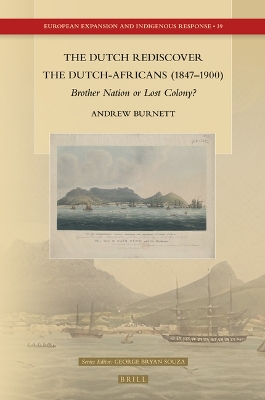European Expansion and Indigenous Response
1 primary work
Book 39
Were the Dutch-Africans in southern Africa a brother nation to the Dutch or did they simply represent a lost colony? Connecting primary sources in Dutch and Afrikaans, this work tells the story of the Dutch stamverwantschap (kinship) movement between 1847 and 1900. The white Dutch-Africans were imagined to be the bridgehead to a broader Dutch identity – a ‘second Netherlands’ in the south. This study explores how the 19th century Dutch identified with and idealised a pastoral community operating within a racially segregated society on the edge of European civilisation. When the stamverwantschap dream collided with British military and economic power, the belief that race, language and religion could sustain a broader Dutch identity proved to be an illusion.
